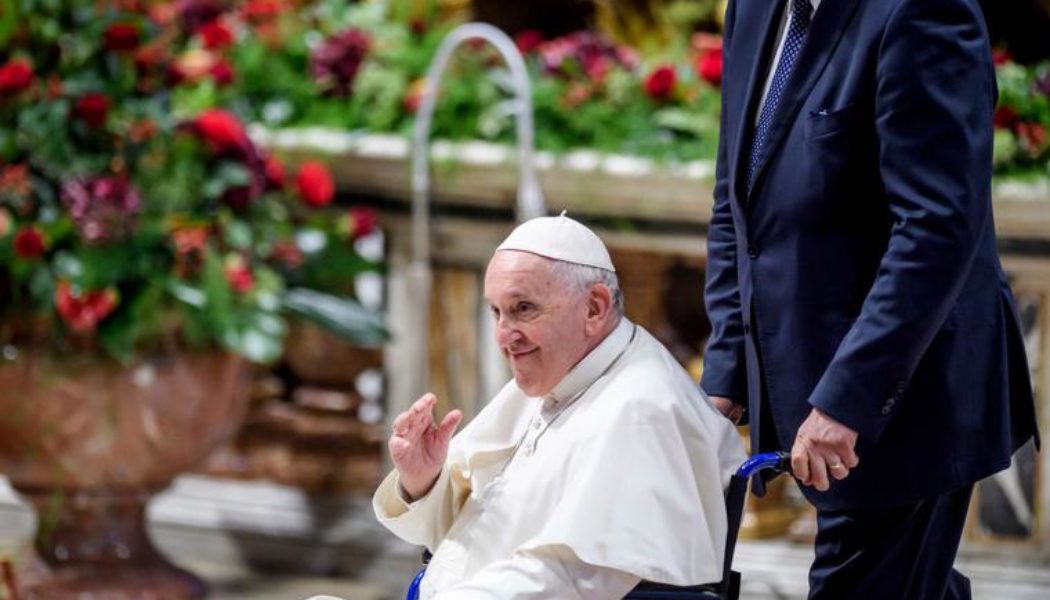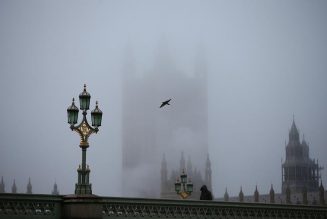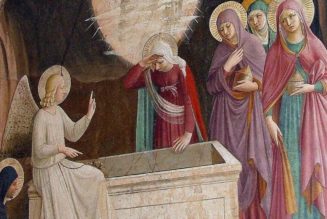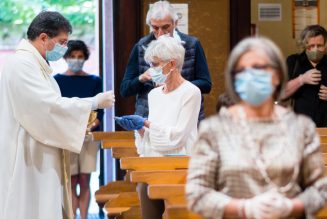
COMMENTARY: This new papal teaching is a welcome shift, certainly worthy of careful reading and reflection.
After a year of barbed commentary directed at liturgical traditionalists from many quarters, the Holy Father’s apostolic letter Desiderio Desideravi, dated June 29 for the solemn Solemnity of Sts. Peter and Paul, takes a rather different tack, both in tone and substance.
Desiderio Desideravi takes its title from the words of Jesus at the beginning of the Last Supper: “I have earnestly desired to eat this Passover with you before I suffer” (Luke 22:15). The letter aims to enhance the “liturgical formation of the People of God.”
This new papal teaching is a welcome shift, certainly worthy of careful reading and reflection. Some initial impressions suggest themselves.
Balm After the Storm?
Pope Francis did not give great attention to the liturgy in the first eight years of his pontificate, but that changed with his abrogation of Benedict XVI’s Summorum Pontificum in July 2021. The Holy Father’s Traditionis Custodes put severe restrictions on the celebration of the “extraordinary form” or “traditional Latin Mass,” banishing it from parish churches and, infamously, prohibiting the publication of its availability in the parish bulletin.
That set off months of contested polemics, with traditionalists being accused of rejecting the validity of Vatican II and hating Pope Francis and the traditionalists accusing the Holy Father of unbecoming cruelty toward some of the most devout members of his flock.
It is quite possible that Pope Francis thought that, no matter how urgent he thinks the problem of “restorationism” is, unity is unlikely to be the fruit of ever more strident rhetoric. Thus it’s time to call off the polemics — an admonition that the Holy Father applies to himself, too.
“Let us abandon our polemics to listen together to what the Spirit is saying to the Church,” he writes (65).
Pope Francis does not back away from his insistence that the “extraordinary form” is not the path forward for the Church, writing that “we cannot go back to that ritual form which the Council fathers, cum Petro et sub Petro, felt the need to reform” (61). Thus he links the older form of the Mass with resistance to Vatican II as a whole and stresses that he intends to promote unity around the post-conciliar reformed liturgy.
That being stated, the point is made with comparative serenity, given what Pope Francis wrote last summer, or how he has repeatedly expressed himself about the traditionally-minded.
Perhaps the time of polemics is over. The whole of Desiderio gives the sense of a pastor thinking that a soothing balm is needed after the bruises of the past year.
Wisdom of the Aged
Pope Francis is now in the twilight of his pontificate, and it is striking that he calls for liturgical “astonishment” and “wonder.” That is a direct echo of Pope St. John Paul II’s final encyclical, Ecclesia de Eucharistia, which called for a new sense of “Eucharistic amazement.”
That was published in 2003, when John Paul himself was in his twilight. It is as if popes, knowing that the end is nearer than the beginning, turn their minds to the eternal things, the most precious things. And nothing is more precious than “the fact that the paschal mystery is rendered present in the concreteness of sacramental signs” in which we are immersed in the “ocean of grace that floods every celebration” (24).
And Pope Francis does not only echo John Paul, but the famous introductory words of Benedict XVI in his first encyclical, Deus Caritas Est: “Being Christian is not the result of an ethical choice or a lofty idea, but the encounter with an event, a person, which gives life a new horizon and a decisive direction.”
Indeed, Benedict could well have written this passage of Pope Francis in Desiderio about the encounter with Christ in the liturgy:
“Here lies all the powerful beauty of the liturgy. If the resurrection were for us a concept, an idea, a thought; if the Risen One were for us the recollection of the recollection of others, however authoritative, as, for example, of the Apostles; if there were not given also to us the possibility of a true encounter with Him, that would be to declare the newness of the Word made flesh to have been all used up. Instead, the Incarnation, in addition to being the only always new event that history knows, is also the very method that the Holy Trinity has chosen to open to us the way of communion. Christian faith is either an encounter with Him alive, or it does not exist” (10).
Those who may have thought that Pope Francis has neglected — or even marginalized — liturgical matters will have their anxieties here eased. Indeed, in frequently citing Romano Guardini — the liturgical theologian most dear to Joseph Ratzinger — there is much in Desiderio that will appeal to those nourished by the liturgical vision of Benedict XVI.
Cardinal Cupich Gets a New Challenge
When Cardinal Blase Cupich of Chicago implemented Traditionis Custodes with a ferocity far beyond what Pope Francis mandated, it was only a matter of time before the rich panoply of liturgical aberrations for which Chicago is famous would pose a difficult question about Cardinal Cupich’s adherence to the magisterium of Pope Francis. Does he implement what Pope Francis wants across the board, or he is selective?
As liturgical outrages from Chicago circulate around the world, Pope Francis has this apt observation:
“The inadequacy of these models of presiding have a common root: a heightened personalism of the celebrating style which at times expresses a poorly concealed mania to be the centre of attention. Often this becomes more evident when our celebrations are transmitted over the air or online, something not always opportune and that needs further reflection” (54).
No doubt Carinal Cupich would prefer that the liturgical “mania” over which he presides was not transmitted abroad. It may be that the Holy Father was watching.
Pope Francis urges a balance between extremes:
“The continual rediscovery of the beauty of the Liturgy is not the search for a ritual aesthetic which is content by only a careful exterior observance of a rite or is satisfied by a scrupulous observance of the rubrics. Obviously, what I am saying here does not wish in any way to approve the opposite attitude, which confuses simplicity with a careless banality, or what is essential with an ignorant superficiality, or the concreteness of ritual action with an exasperating practical functionalism” (22).
But there is a sense that he knows that deviations from the virtuous mean are not normally distributed, as he decries “imaginative — sometimes wild — creativity without rules” (48).
There is much more to consider in Desiderio, which is rich in biblical and theological passages. Pope Francis does not make any new decrees, but offers “prompts or cues for reflections that can aid in the contemplation of the beauty and truth of Christian celebration” (1).
Beauty, truth and good liturgy — a worthy basis for the liturgical formation of the whole Church.
Join Our Telegram Group : Salvation & Prosperity









